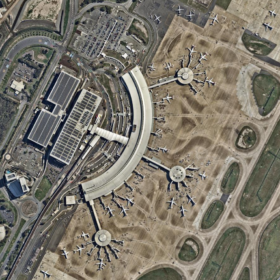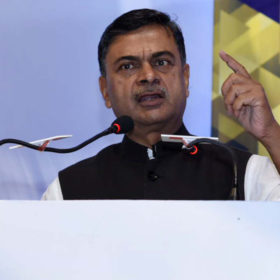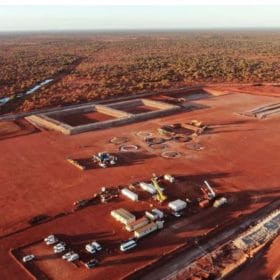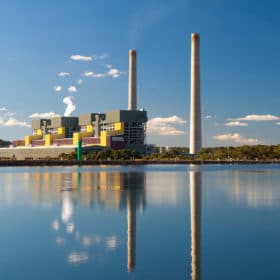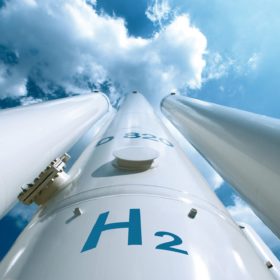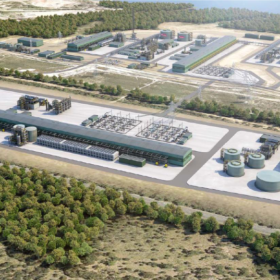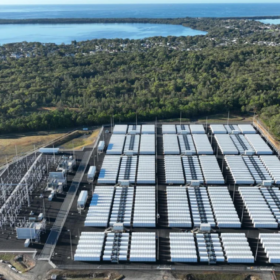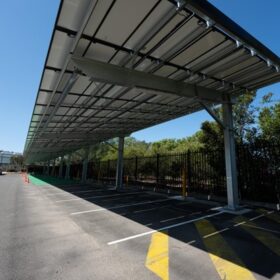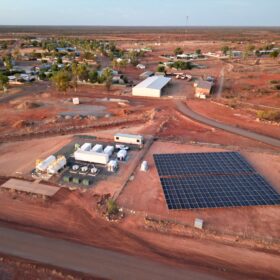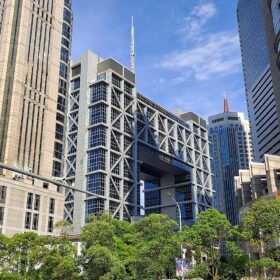Fortescue already approved for world’s largest electrolyser production plant in Queensland
Fortescue Future Industries, founded by billionaire Andrew Forrest, has already received planning approval for its 2 GW electrolyser factory at Gladstone despite announcing the plan just five weeks ago.
Novel ways solar can and is being used at Australian airports
Airports are increasingly turning to solar to decarbonise, with ideations ranging all the way from gimmicky solar runways and “dead zone” solar pathways to very real rooftop arrays. Whatever happens, solar certainly has a place at airports with Brisbane airport saving itself somewhere between $20 million to $50 million thanks to the solar system it installed in 2019.
Australia welcomes first energy data ‘one stop shop’
Energy data provider C4NET has now opened its services up to any party with a query, streamlining data access in the interest of accelerating Australia’s transition.“First thing we’re trying to do is be a one stop shop,” James Seymour, CEO of C4NET, told pv magazine Australia.
Indian government expands budget for PV manufacturing scheme
The Indian authorities have announced plans to provide more funding to help more manufacturers under its production-linked incentives scheme, which is designed to support gigawatt-scale manufacturing of high-efficiency solar modules.
Queensland begins its QREZ development with a “measly” 3.3 GW allocation
The Queensland government has published its draft plan to unlock 3,300 MW, or 3.3 GW, of new renewable generation as part of the first stage of developing state’s three Renewable Energy Zones (REZs).
50 MW solar farm the centrepiece of Queensland mine proposal
A torbanite mine proposed for central Queensland is hitching itself to renewable energy, presenting its accompanying 50 MW solar farm as centrepiece of its plan.
Is gas or storage the ideal dispatchable replacement for coal? A NSW case study
Everything you see exists together in a delicate balance. Octopus Investments Australia’s Investment Director of Energy Markets, Lumi Adisa, takes a Lion King-themed deep dive into New South Wales to find out what comes after coal.
Australian startups join forces to develop 1.3 GW hydrogen export facility in Malaysia
Two Australian companies, hydrogen fuel cell startup H2X and emerging renewables developer Thales New Energy, have signed an agreement with a Malaysian state-owned corporation to develop a 1.3 GW hydrogen export facility powered by hydroelectricity in the Malaysian state of Sarawak.
Australia claims global hydrogen spotlight with 1.7 GW project in Tasmania and new tech to produce hydrogen from rooftop PV
In this week’s edition of pv magazine’s Hydrogen Stream, Australian projects took centre stage including Woodside announcing it had secured land for its H2TAS project, an MoU signed between Perth-based metals manufacturing company Unique Metals and Energy consultancy Xodus, as well as ARENA’s funding for Sun Metals zinc refinery in Townsville.
Investability of Australian large-scale renewables remains low
COP flack for Australia’s insubstantial and unstructured response to decarbonisation has not made the country more attractive to investors. Has our first-mover status cruelled our investability, and what could the next Federal Government do to revive investor confidence?

